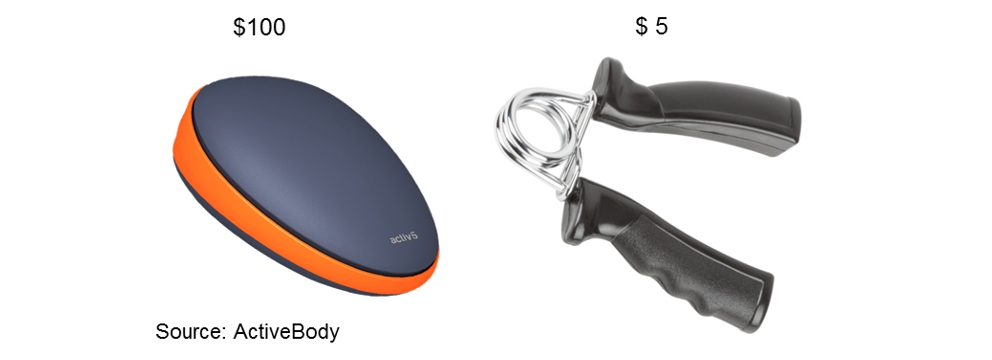Each year starts with CES in which the world is introduced to thousands of new products, concepts and applications that are all designed to make our lives easier, safer, healthier, and happier. Many of these are truly innovations in technology; others might offer a “gee-whiz” moment of excitement; while some leave you simply asking why.
So, we’ll take a look at some of the smart and not-so-smart devices of CES 2017.
The Smart
Alexa
The industry has finally taken notice that controlling devices via voice commands is easier than having to turn on a phone and tap into an app. In June of 2015, Amazon announced the Alexa Skills Kit (ASK) – a collection of self-service APIs and tools that allows developers to add skills to Alexa – an intelligent and scalable cloud service that adds voice-enabled experiences to any connected product.
As such, despite having no actual presence at CES, Amazon was EVERYWHERE, as vendors across all product categories – automobile, smart home, entertainment, appliances, robots etc. – announced their solutions could now be controlled by Alexa. In fact, according to Amazon, more than 7,000 custom skills have been built by 3rd party developments to enhance Alexa – up from 5,400 in December 2016, 3,000 in September and 1,000 in June.
Voice as a user interface makes sense because it’s something that comes naturally to humans and is used on a daily basis. A key advantage is the fact that voice is not only hands-free, but eyes-free, making it suitable for use in a variety of environments, as well as for the visually impaired. And, unlike most written words, voice can communicate mood, gender, identity (such as recognizing a voice), emphasis and even personality.
Check out an older blog post that highlights the value of voice as a user interface.
Attractive High Performance Home Routers
In this age of growing malicious attacks, Symantec introduced the Norton Core, a new secure Wi-Fi home router that scans and monitors every network packet, data encryption, and other anomalous behaviors from every device connected to it at once. If a device is acting strangely, it will isolate it and alert the user via an app. It allows for network segmentation, letting the user place their IoT devices (such as smart bulbs, thermostat, etc.) on an entirely different network from the rest of their devices. It also offers other features such as content filtering, which lets the user block certain types of content. Finally, it’s also aesthetically pleasing.

Linksys introduced its Velop Whole-Home Wi-Fi product, a Tri-Band modular Wi-Fi system that can be installed in various mesh configurations. Velop uses three radios to dynamically determine the optimal path from the modem and “parent” node to each “child” node – ensuring the fastest speeds to all client devices, regardless of which node they are connected to. Linksys also announced that Velop works with Amazon Alexa for a voice-activated experience. Three new Alexa skills will be available at launch including turning guest access on and off, obtaining the guest Wi-Fi name and password, and getting the main network credentials. Did I also say that it’s aesthetically pleasing?
Smart Bike Locks

Both Lattis and Deeper Lock introduced smart bike locks that notify the owner when the bike has been tampered with or stolen. Both products feature keyless lock/unlock capabilities, self-charging via solar batteries and audible alarms when the bike has been disturbed. The Lattis Ellipse utilizes Bluetooth to notify the owner, but they must be within 800 feet of the bike to receive the notification. The Deeper Lock product provides an internal GPS tracker when the motion sensors are triggered and will then send GPS coordinates in real time direct to the owner’s phone and to a database. Similar to iPhone’s Find My Phone app, the owner can monitor bike location using the map in the Deeper Lock app.
Flexible Displays/Sensors/Batteries

Royole Corporation demonstrated its FlexPhone based on its proprietary flexible display and flexible sensor technology. When rigid, the FlexPhone functions as a regular phone but also can be rolled up conveniently onto your wrist as a phone or fitness monitor. The FlexPhone is 6mm thick and 100g in weight. What’s particularly cool is seeing where devices can and will go in the future. The only downside to this product is the fact that is only supports 3G connectivity at this time.
Panasonic introduced a flexible lithium-ion battery with a thickness of only 0.55mm, or about 0.022 inches. Suitable for use in card-type and wearable devices, this rechargeable battery can retain its characteristics even after being repeatedly bent into a radius of 25mm or twisted to an angle of 25 degrees.

Not to be outdone, LG introduced its “wallpaper” TV, a TV featuring a flexible screen measuring only 2.57mm thin in the 65-inch model, that can be mounted directly on the wall, with magnets to eliminate any gap.

This is the type of technology that offers an entirely new proposition to the field of wearables.
The Not So Smart
Now, this is a subjective category. Some will argue the value of these devices, but in my experience, they will all suffer the same fate as many of the wearables, which suffer greatly from a high abandonment rate.
Active5 – Exercise Puck ($100)
Activebody introduced wireless-enabled, isometric-based strength training device that coaches users through, five-minute, low-impact, full-body workouts. According to ActiveBody, the Activ5 helps users increase strength by as much as 5% per week, and effectively tones and strengthens muscles through short, five-minute workouts a few times a day. You can use this when you’re also wearing the Electronic Ab Exerciser and the iPant toner and shaper. Save your money and buy a $5 hand-gripper.

Moen U Smart Shower ($1,160-$2,200)
Moen’s U shower system connects up to four water outlets – regular shower head, body spray, tub faucet, or overhead rain shower – to a smartphone app, through which you can start and stop your shower, preset the water temperature and get notified when it’s time to step in. Somehow, I think I can save a whole lot of money and just turn the water on myself and wait for it to warm up.
Smart Hairbrush ($200)
The Kérastase Hair Coach features Withings' advanced sensors and seamless product design along with L'Oréal's patent-pending signal analysis algorithms to measure the quality of hair and the effects of different hair care routines. This smart hairbrush uses a gyroscope to assess brushing speeds, an accelerometer to count brushstrokes, and a microphone to record the sounds of frizzy, dry, or breaking hair. It then sends information about hair health to your phone – there’s an app that tracks your “hair score” and employs haptic vibrations to guide and improve brushing techniques.
Feel Mood Bracelet ($149)
Growing up, we had a mood ring for the “connected” generation. Feel introduced a mood bracelet that monitors your emotions throughout the day and sends feedback to a companion app on your phone. It has four integrated sensors in the band that measure the body’s skin temperature, blood volume pressure, and galvanic skin response. Based on the data it gathers, the app graphs a visualization of emotion levels throughout the day and offers personalized suggestions for stress reduction and self-improvement.

Users can review how their moods were affected by where they were, who they were with, and what they were doing at any point in the day.
Final Thoughts
CES is always full of some amazing innovation – like the new telescope by Unistellar that uses light amplification and augmented reality to take looking into space to a whole new level. But for every great product or innovation, we also get the strange and the senseless. While attaching a device to you helmet (Ahead by Analogue Plus) to listen to music or calls sounds like a good idea – the fact that you’re wearing a helmet should tell you that your activity is potentially dangerous – why add to that danger?
Technology developers, particularly for wearables and IoT-related products, must remember their Four Ws: Who wants to use it? Why do they want to use it? When do they want to use it? And where do they want/have to use it? Technology solutions must fit seamlessly and unobtrusively into a person’s life otherwise the risk of abandonment is high.
On the other hand, some developers should simply remember this old adage: Just because you can, doesn’t mean you should.
Happy New Year!
